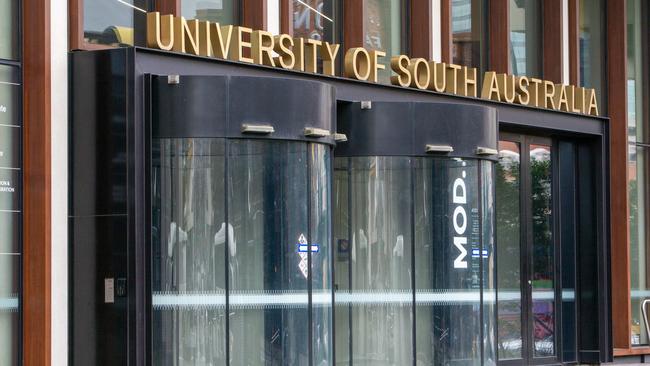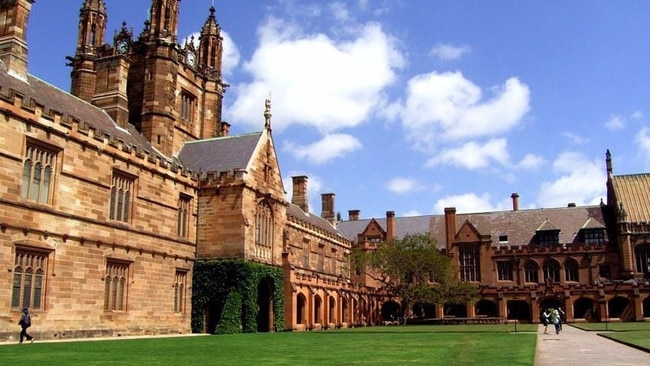Increasing financial pressure on universities could push more to consider mergers: KordaMentha
Financial pressures on universities, exacerbated by the unsuccessful bid to limit international student numbers, could prompt more merger discussions, KordaMentha says.

Increasing financial pressures on universities, exacerbated by the federal government’s ultimately unsuccessful bid to limit international student numbers by legislation, could prompt more merger discussions and demands an extra focus on cost controls, KordaMentha says.
The professional services firm’s inaugural Higher Education annual report, written by partners Dionne Higgins, Henriette Rothschild and Suzanne Wauchope, says its analysis of 2023 financial statements from universities in NSW, Victoria and Queensland shows that equivalent full-time student load (ETFSL) numbers are still significantly lower than before the pandemic.
This was caused by a mix of a drop in international student numbers, school leavers deferring or not enrolling in university, and others taking on reduced study loads.
The report’s findings mirror concerns raised by Universities Australia in its Federal Election Statement, released in December, which said “Australia’s university sector is at a financial breaking point, grappling with unsustainable funding cuts, rising costs and dwindling resources’’.
“Without urgent action, the very institutions that drive innovation, educate future leaders and underpin our nation’s prosperity are at risk of severe decline’’.
The KordaMentha report says the impact of the pandemic on domestic and international student numbers, combined with a decline in the real value of commonwealth funding as a result of the Morrison government’s Job-Ready Graduates program, have increased financial pressures on universities on the revenue side.
The Job-Ready Graduates program lowered the amount students had to pay for courses deemed job-ready or which fulfilled national priorities, while other course fees were unchanged or increased, with most liberal arts disciplines attracting the highest level of student fees.

University advocacy groups including the Group of Eight and the Innovative Research Universities (IRU) group have been lobbying for either a single student contribution rate, or a tiered approach with prices set based on future earning potential.
The IRU says in a submission to the government that student contributions to their education should not exceed 50 per cent and that student contributions should be aligned to graduate employability and government contributions aligned with the cost of delivery.
KordaMentha said while universities had been grappling with a revenue crunch, their costs had been rising.
“Using a simple ‘cost to serve’ measure (total operating expense divided by total ETFSL), university costs rose by 22 per cent between 2018 and 2022,’’ the KordaMentha report says. “In 2023, sector operating profit margins reached their lowest levels in the last five years, as increases in costs outpaced revenues.’’
The cost pressures were driven by increased staff costs, an increase in hybrid teaching delivery methods and more part-time students, while universities also assumed a faster return of student revenue following the pandemic.
And while international student revenue growth has long been the saviour of the sector, it is no longer the panacea it once was.
“It’s clear universities face immense pressures on both their revenue and their costs,’’ KordaMentha said.
“Historically, universities have been able to manage their way through similar periods by increasing international student revenues. But that avenue may soon be closed.’’
KordaMentha said international student numbers reached a four-year peak in 2023, almost returning to pre-pandemic figures due to supportive policy settings.
“However, this enabling environment for international education was thrown into reverse towards the end of 2023 as political concerns about the cost of living, housing shortages and levels of net overseas migration started to increase,’’ the report says.
“International students were (wrongly) identified as a major contributor to these problems.
“To address these concerns, the federal government rapidly and significantly reduced the number of student visas granted to international students.
“At the start of 2024 universities had a healthy international student application pipeline which, assuming historic conversion rates, would have ensured gradual return to pre-Covid performance and university surplus.
“Then, in early 2024, for many universities, visa approvals started to decline to unprecedented low levels.

“It became apparent the Department of Home Affairs, applying a ministerial direction, was using a system of risk classification assessment levels (assigned under Ministerial Directive 107), devised for a completely different purpose, as the basis for prioritising visa applicants to some ‘low-risk’ institutions over others perceived as higher risk.’’
KordaMentha said this severely disadvantaged many universities, “while funnelling students into others, depending on their assessment level’’.
Rebuilding numbers
The Education Services for Overseas Students amending legislation, which sought to hand government the power to decide how many students each university could enrol, while eventually failing to pass the parliament, also damaged universities’ attempts to rebuild student numbers.
“The fallout of this proposed legislative change will be felt for some time and universities will likely experience a drop in international revenue in 2025 against forecasts,’’ KordaMentha said.
“Any further debate regarding student visas caps will erode and curtail universities’ licence to recruit international students, negatively impacting the sector and Australia broadly.’’
KordaMentha said universities had been able to grow and build their international reputations, while making relatively modest calls on public funding by internationals standards as a result of international student revenue.
“Universities have used international fee revenue to cross-subsidise research such that universities have been the most significant contributors to Australian R&D spending, far exceeding the contributions of government and industry,’’ the report says.
“For universities, the changes that were recently proposed by government represent a reversal of almost 20 years of consistent government policy supportive of student migration and has created a sense of apprehension and diluted short and long-term confidence for many universities in their ability to attract, and compete globally, for international students.
“It was based on a largely false premise that international students are the cause of the housing crisis, yet led to an increase in students enrolling at universities in Australia’s large cities where the housing crisis is at its most severe.’’
The failure of the legislation also meant that control over student numbers effectively fell back under Ministerial Directive 107, which assesses the risk associated with the education provider and the student’s country of citizenship.
Anecdotally, sources say this had the impact of prioritising student flow into the larger eastern states universities – exactly the areas most affected by the housing crisis – while some students who had paid their fees to go to other universities found their visas simply weren’t processed in time, with some students having to be refunded their tuition fees.
Ministerial Direction 107 in mid December was replaced with Ministerial Direction 111, which ties new international student enrolments to quotas assigned to each university.

KordaMentha said the financial issues caused by pressure on both the cost and revenue fronts meant universities would have to make some tough decisions in coming years.
This would include reconsidering how much they put into research, which has been sustained for the past two decades by international revenue and, with expanding international enrolments to be linked to providing additional student accommodation under the government’s new policy framework, “universities may need to reconsider their investment priorities’’.
“Finally, it may be that the financial stress on universities will lead to discussions about mergers as a way of assuring financial sustainability,’’ KordaMentha says.
“Universities will be well served by a stronger and clearer line of sight of their increasingly complex cost structures and costs to serve.
“This insight and understanding will allow universities to operate more effectively in the short to medium term, while giving them an essential foundation for the strategic choices ahead.
“Waiting, without this depth of insight, until choices need to be made, will leave universities and their councils slow to understand the full implications of their choices and less able to make tough choices and embrace new growth opportunities.
“However individual universities approach the short-term challenges and medium-term decisions, it is clear that the longer term for the whole university sector will not be ‘business as usual’.’’
Universities Australia said one of the ways universities could move towards financial stability would be through the re-establishment of the Education Investment Fund.
The fund was established in 2009 as part of the Nation Building Funds Act following the Global Financial Crisis, and provided $4.2bn for infrastructure projects in a series of competitive funding rounds between 2008 and 2011.
‘Shortsighted’ move
But the abolition of the fund was on the Coalition’s agenda from 2014, with payments initially stopped before it was abolished in 2019, with the money instead funnelled into a new emergency response and disaster relief fund.
The Group of Eight top universities at the time issued a statement saying its abolition was “shortsighted and damaging’’.
Universities Australia also said more students should be attracted to study via reducing student loans through changes to HECS-HELP, and replacing the Job-Ready Graduates Program.
“Any steps the current and all future governments can take to ease the financial burden on students will assist in this vital endeavour, including consideration of a funding system that both incentivises more Australians to study at university and recognises the benefits that a university education brings, regardless of the discipline,’’ it said.
Universities Australia is also lobbying for the government to lift its investment in research and development from 0.49 per cent of GDP to the OECD average of 0.74 per cent, and increase PhD stipends “to lift them above the poverty line’’.
The group also wants the international student sector to be grown sustainably, “without reducing its size or value’’.




To join the conversation, please log in. Don't have an account? Register
Join the conversation, you are commenting as Logout